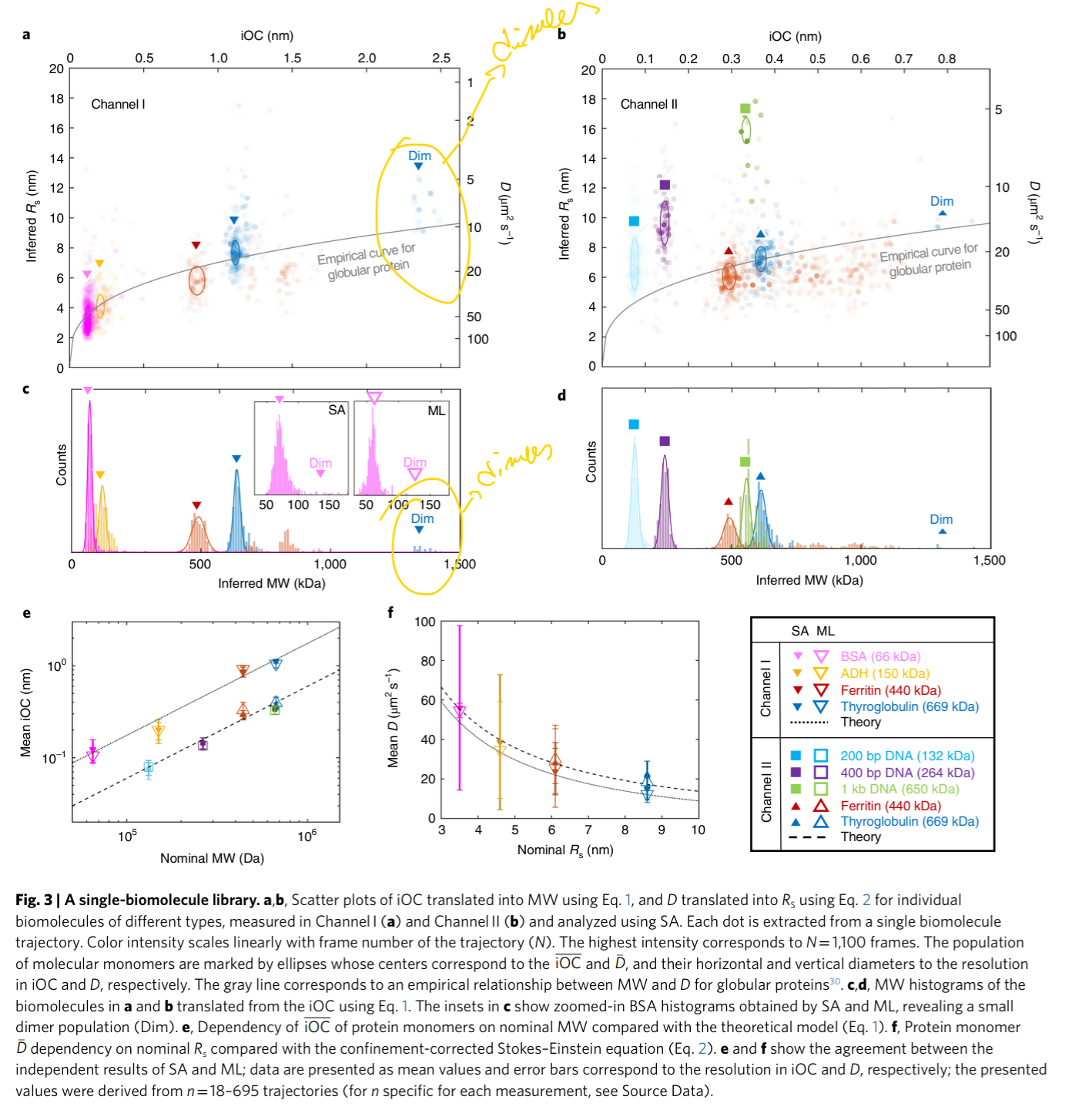202405221743
- Source: [[ @spackova2022 Label-free nanofluidic scattering microscopy of size and mass of single diffusing molecules and nanoparticles ]]
- Tags: #nanoparticle-sizing #molecular-weigth #nanoparticle-tracking-analysis #nanoparticle-tracking-in-channels
The principle of operation of
202405221125 Nanofluidic Scattering Microscopy (NSM)
is very similar to that of the
NanoCET
(and the challenges are similar.) However, since they use an interferometric detection scheme, they can increase the dynamic range (in essence, the signal scatters as
To prove the usefulness of the method, they focused on smaller proteins:

Two things are very interesting to note: they are able to detect dimers of proteins, since they scale linearly with molecular weight (and they prove the relationship between molecular weight and
On the other hand, the size distribution they get from measuring the diffusion coefficient is
very
broad (check for smaller
Backlinks
These are the other notes that link to this one.
